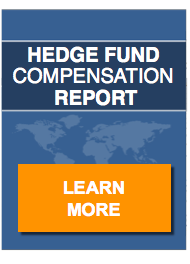In the 103-year history of the Federal Reserve Bank, there have been fifteen Federal Reserve Chairs. Of these fifteen, nine were appointed by Democrat Presidents, and six by Republican Presidents. Eighteen presidents served during the same period. However, Kennedy (D), Johnson (D) and Eisenhower (R) did not make new Federal Reserve Chair nominations during their terms of office. Donald Trump (R) recently nominated the sixteenth Chair, 64 year old, Jerome Hayden Powell to replace Janet Yellen when her term expires February 1, 2018.
Contrasting Powell and Yellen
As we know, there are two primary tools in the Federal Open Market Committee’s (FOMC) toolbox— interest rate regulation and quantitative easing. Quantitative easing explodes the Fed’s balance sheet, which currently stands at $4.5 trillion. The Fed’s current goal of reducing this balance sheet is a corollary of quantitative easing, not a third tool.
Powell and Yellen, by all accounts, are largely on the same page with regard to interest rates and both share the goal of reducing the Fed’s balance sheet. There are, however, stark differences between Powell and Yellen in terms of their life experience and it is difficult to predict how this will affect FOMC policy long-term.
Yellen is an academic, having earned her Ph.D. in economics from Yale in 1971. Powell, on the other hand, earned his Juris Doctor degree from Georgetown University Law Center in 1979, after earning a BA in Politics from Princeton University in 1975.
Career Paths
Janet Yellen has a long history with the Federal Reserve, dating back to 1977 when she served as an economist for the Board of Governors through 1978. Prior to serving the Board, she was an assistant professor at Harvard. Following her Board service, she returned to academia as a lecturer at the London School of Economics and Political Science through 1980.
Then, Yellen joined the University of California’s Haas School of Business as a researcher and professor of macroeconomics. In 1994, she was appointed to the Federal Reserve Board of Governors, serving from August 12, 1994 to February 17, 1997 while serving an overlapping term as Chair of Bill Clinton’s Council of Economic Advisors from February 18, 1997 to August 3, 1999. She returned to the Fed in 2004, serving as President of the San Francisco Federal Reserve Bank until 2010, when she was appointed Vice Chair. She succeeded Ben Bernanke as Chair on February 3, 2014 and will remain until Jerome (Jay) Powell takes over, assuming he is confirmed.
After graduating Princeton, Powell became a legislative assistant for Pennsylvania Senator Richard Schweiker. Following his graduation from Georgetown, Powell clerked for Judge Van Graafeiland of the U.S. Court of Appeals for the Second Circuit. After this, he worked as a lawyer for Davis, Polk and Wardell from 1981 to 1983 and for the firm of Werbel & McMillen from 1983 to 1984. Beginning in 1984, he worked for the investment bank Dillon, Read & Co. leaving in 1990, having risen to the position of vice president.
In 1990, he accepted the post of Under Secretary of the Treasury for Domestic Finance after being nominated by George W. Bush. He returned to Dillon, Read & Co. in 1993. In 1997, he joined The Carlyle Group as a partner. Powell left The Carlyle Group in 2005 and founded Severn Capital Partners. In 2008, he became a partner in the Global Environment Fund, which was a private equity and venture capital firm investing in sustainable energy.
Obama nominated Powell to the Federal Reserve Board of Governors and he took office on May 25, 2012 to fill the unexpired term of Frederic Mishkin. In January, 2014, he was nominated for a full fourteen year term in his own right and was confirmed by the Senate in a 67 – 24 vote. His term as a Governor expires January 31, 2028.
He is not an academic, and has a more varied educational and work background than does his predecessor. This practical life experience is almost certain to manifest in ways not seen during Yellen’s tenure in office. Powell’s career path will likely result in a more pragmatic approach to economic policy.


